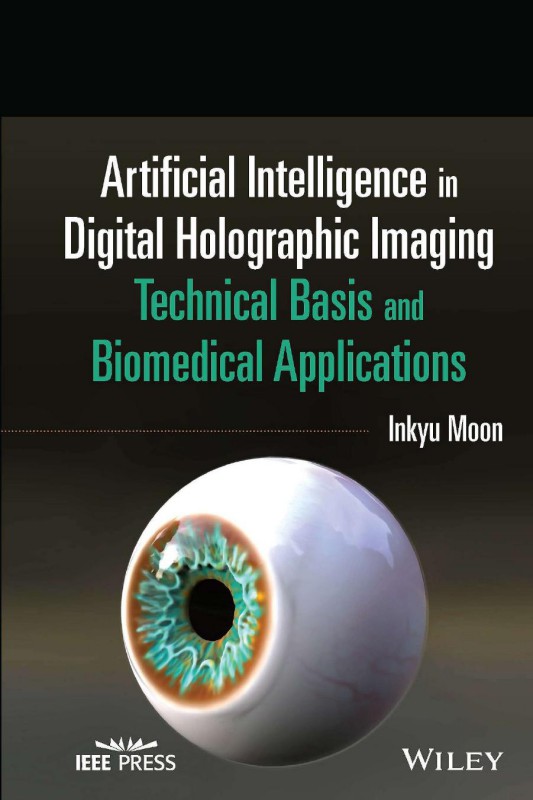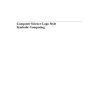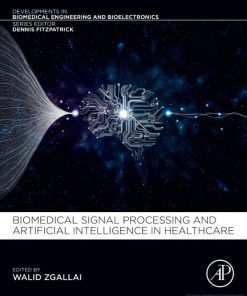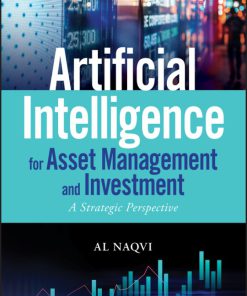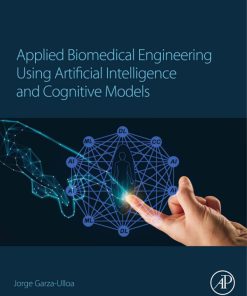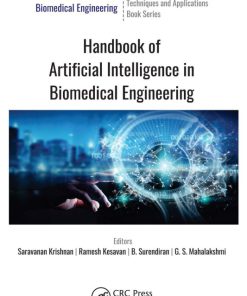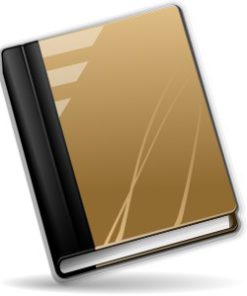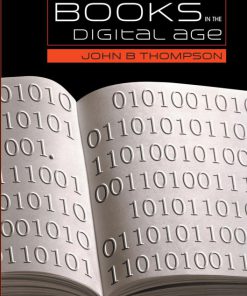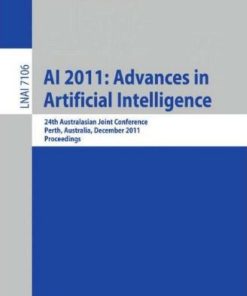(Ebook PDF) Artificial Intelligence in Digital Holographic Imaging 1st edition by Inkyu Moon 1119239044 9781119239048 full chapters
$50.00 Original price was: $50.00.$25.00Current price is: $25.00.
Authors:Moon, Inkyu; , Series:Biomedical [86] , Author sort:Moon, Inkyu; , Languages:Languages:eng , Published:Published:Oct 2022 , Publisher:Wiley
Artificial Intelligence in Digital Holographic Imaging 1st edition by Inkyu Moon – Ebook PDF Instant Download/DeliveryISBN: 1119239044, 9781119239048
Full download Artificial Intelligence in Digital Holographic Imaging 1st edition after payment.
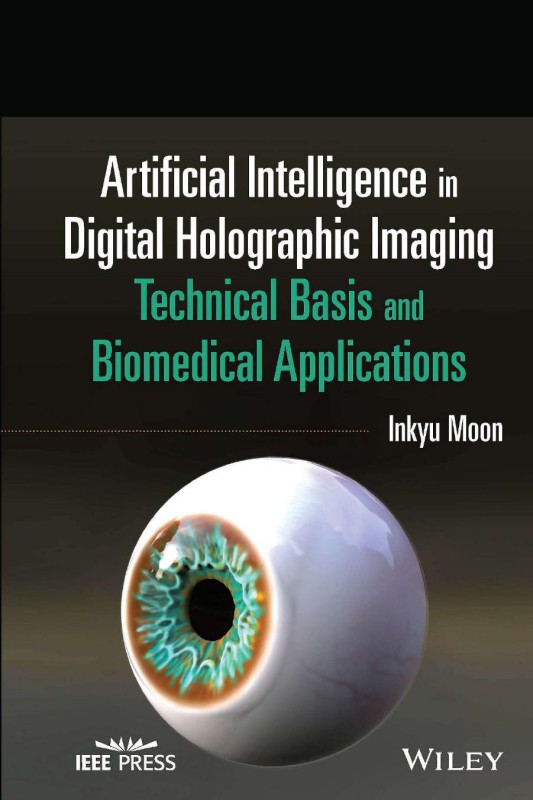
Product details:
ISBN-10 : 1119239044
ISBN-13 : 9781119239048
Author : Inkyu Moon
Artificial intelligence (AI) has made great progress in recent years. Digital holographic imaging has recently emerged as a powerful new technique well suited to explore cell structure and dynamics with a nanometric axial sensitivity and the ability to identify new cellular biomarkers. By combining digital holography with AI technology, including recent deep learning approaches, this system can achieve a record-high accuracy in non-invasive, label-free cellular phenotypic screening. It opens up a new path to data-driven diagnosis.
Artificial Intelligence in Digital Holographic Imaging 1st Table of contents:
Part I: Digital Holographic Imaging
1 Introduction
References
2 Coherent Optical Imaging
2.1 Monochromatic Fields and Irradiance
2.2 Analytic Expression for Fresnel Diffraction
2.3 Lens Transmittance Function
2.4 Geometrical Imaging Concepts
2.5 Coherent Imaging Theory
References
3 Lateral and Depth Resolutions
3.1 Lateral Resolution
3.2 Depth (or Axial) Resolution
References
4 Phase Unwrapping
4.1 Branch Cuts
4.2 Quality‐guided, Path‐following Algorithms
References
5 Off‐axis Digital Holographic Microscopy
5.1 Off‐axis Digital Holographic Microscopy Designs
5.2 Digital Hologram Reconstruction
References
6 Gabor Digital Holographic Microscopy
6.1 Introduction
6.2 Methodology
References
Part II: Deep Learning in Digital Holographic Microscopy (DHM)
7 Introduction
References
8 No‐search Focus Prediction in DHM with Deep Learning
8.1 Introduction
8.2 Materials and Methods
8.3 Experimental Results
8.4 Conclusions
References
9 Automated Phase Unwrapping in DHM with Deep Learning
9.1 Introduction
9.2 Deep‐learning Model
9.3 Unwrapping with Deep‐learning Model
9.4 Conclusions
References
10 Noise‐free Phase Imaging in Gabor DHM with Deep Learning
10.1 Introduction
10.2 A Deep‐learning Model for Gabor DHM
10.3 Experimental Results
10.4 Discussion
10.5 Conclusions
References
Part III: Intelligent Digital Holographic Microscopy (DHM) for Biomedical Applications
11 Introduction
References
12 Red Blood Cell Phase‐image Segmentation
12.1 Introduction
12.2 Marker‐controlled Watershed Algorithm
12.3 Segmentation Based on Marker‐controlled Watershed Algorithm
12.4 Experimental Results
12.5 Performance Evaluation
12.6 Conclusions
References
13 Red Blood Cell Phase‐image Segmentation with Deep Learning
13.1 Introduction
13.2 Fully Convolutional Neural Networks
13.3 RBC Phase‐image Segmentation via Deep Learning
13.4 Experimental Results
13.5 Conclusions
References
14 Automated Phenotypic Classification of Red Blood Cells
14.1 Introduction
14.2 Feature Extraction
14.3 Pattern Recognition Neural Network
14.4 Experimental Results and Discussion
14.5 Conclusions
References
15 Automated Analysis of Red Blood Cell Storage Lesions
15.1 Introduction
15.2 Quantitative Analysis of RBC 3D Morphological Changes
15.3 Experimental Results and Discussion
15.4 Conclusions
References
16 Automated Red Blood Cell Classification with Deep Learning
16.1 Introduction
16.2 Proposed Deep‐learning Model
16.3 Experimental Results
16.4 Conclusions
References
17 High‐throughput Label‐free Cell Counting with Deep Neural Networks
17.1 Introduction
17.2 Materials and Methods
17.3 Experimental Results
17.4 Conclusions
References
18 Automated Tracking of Temporal Displacements of Red Blood Cells
18.1 Introduction
18.2 Mean‐shift Tracking Algorithm
18.3 Kalman Filter
18.4 Procedure for Single RBC Tracking
18.5 Experimental Results
18.6 Conclusions
References
19 Automated Quantitative Analysis of Red Blood Cell Dynamics
19.1 Introduction
19.2 RBC Parameters
19.3 Quantitative Analysis of RBC Fluctuations
19.4 Conclusions
References
20 Quantitative Analysis of Red Blood Cells during Temperature Elevation
20.1 Introduction
20.2 RBC Sample Preparations
20.3 Experimental Results
20.4 Conclusions
References
21 Automated Measurement of Cardiomyocyte Dynamics with DHM
21.1 Introduction
21.2 Cell Culture and Imaging
21.3 Automated Analysis of Cardiomyocyte Dynamics
21.4 Conclusions
References
22 Automated Analysis of Cardiomyocytes with Deep Learning
22.1 Introduction
22.2 Region‐of‐interest Identification with Dynamic Beating Activity Analysis
22.3 Deep Neural Network for Cardiomyocyte Image Segmentation
22.4 Experimental Results
22.5 Conclusions
References
23 Automatic Quantification of Drug‐treated Cardiomyocytes with DHM
23.1 Introduction
23.2 Materials and Methods
23.3 Experimental Results and Discussion
23.4 Conclusions
References
24 Analysis of Cardiomyocytes with Holographic Image‐based Tracking
24.1 Introduction
24.2 Materials and Methods
24.3 Experimental Results and Discussion
24.4 Conclusions
References
25 Conclusion and Future Work
People also search for Artificial Intelligence in Digital Holographic Imaging 1st:
uses of holographic imaging
3d and holographic imaging examples
what is 3d and holographic imaging
holographic imaging technology
digital holographic imaging
You may also like…
eBook PDF
(Ebook PDF) Artificial intelligence in IoT 1st edition by Fadi AI Turjman 3030041107 9783030041106

